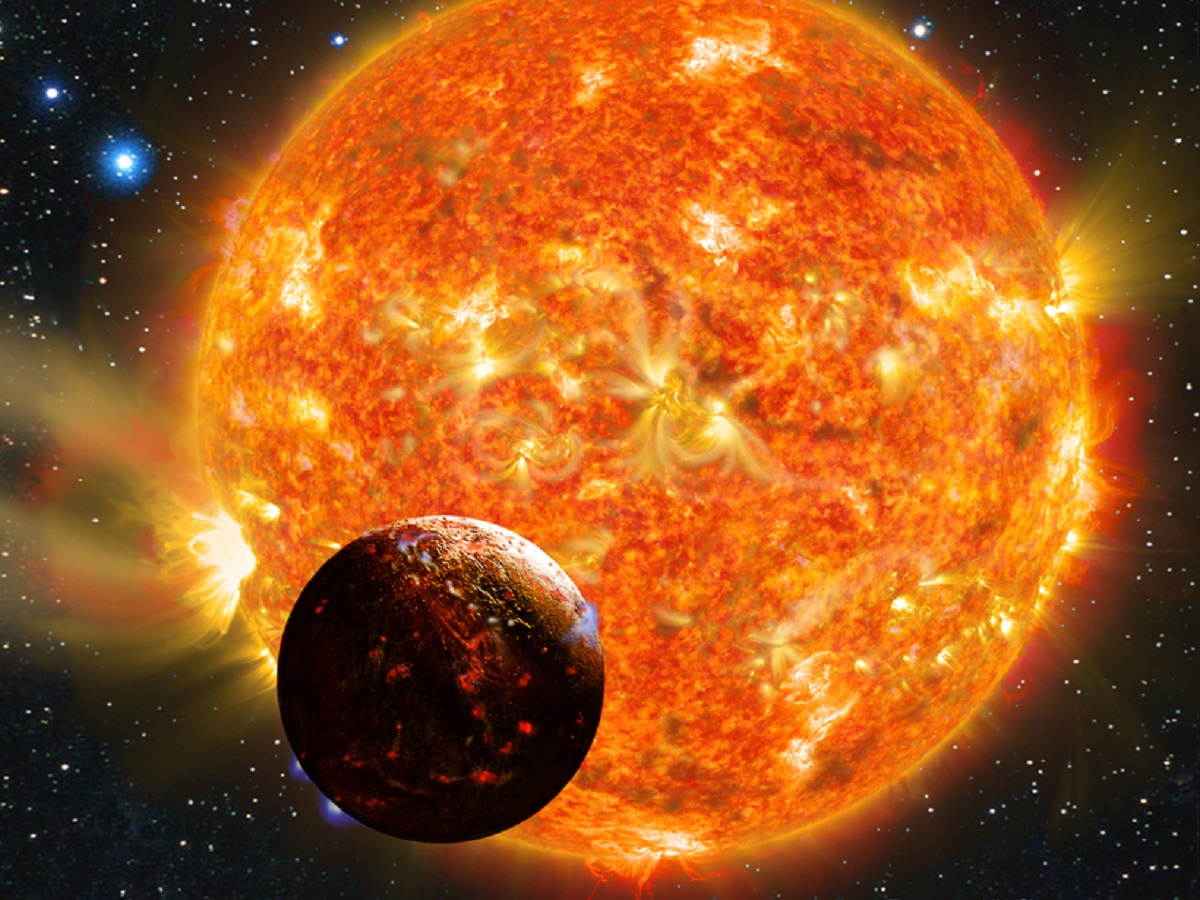
Scientists believe they have found the answer to the mystery with the exoplanet 55 Cancri e. According to the news Stady From Cornell University, the strange signals emanating from the “super-Earth” may be caused by it losing and recreating its atmosphere every few hours.
Since the discovery of the exoplanet in 2004, astronomers have been receiving strange signals without being able to explain them. Volcanoes on this planet are periodically active and release hot gas that forms the atmosphere. That atmosphere then collapses again, leaving the planet unprotected, according to the study. To test this theory, the James Webb Space Telescope (JWST) should be trained for exoplanet research.
Planet 55 Cancri e is rocky and about eight times more massive than our planet. It is about 40 light years away from Earth. It is a satellite of another star. The two space objects are less than 2% of the distance between Earth and the Sun. Thus the complete orbit of 55 Cancri e around the star takes only 17 hours.
This creates some extreme conditions on the planet that have proven inexplicable. Perhaps the most puzzling aspect of this planet, as pointed out in a paper accepted in September in the Astrophysical Journal Letters, is the nature of its transit signal. This is the light that is visible from Earth when o “55 Cancri” the dot in front of the star, It causes a small eclipse, and light appears when the planet passes behind its star.
Sometimes when 55 Cancri e passes behind its star, no visible light is emitted from the planet itself, while other times the planet emits a strong light signal. In infrared light, there is always a signal, although this signal varies in intensity.
Observations of infrared light by the Spitzer Space Telescope have shown that the day on the planet appears much larger Temperatures rise above 2427 degrees Celsius. On the contrary, night temperatures were very low at around -1127 degrees Celsius.
In the new study, the authors hypothesize that the planet’s proximity to its star causes it to blow out gases. This means that giant volcanoes and thermal vents are activated and release hot, carbon-rich elements into the atmosphere.
But the planet cannot maintain this atmosphere for long due to the extreme heat. Eventually this gas disappears, leaving the planet “bare” for the process to begin again.
Unlike most planets, 55 Cancri e’s atmosphere is unstable. The outgassing process attempts to increase the volume of the atmosphere, while the intense radiation and solar winds from the star pull it away. But these two processes are not balanced, which is why a planet sometimes has an atmosphere, and sometimes it doesn’t.
Researchers believe that this imbalance in the planet’s atmosphere may explain this Strange traffic lights. When a planet has no atmosphere, it emits no visible light although the planet’s hot surface still emits infrared light. When it has an atmosphere, both visible light and all radiation coming from the surface appear in the transit signal.

“Avid problem solver. Extreme social media junkie. Beer buff. Coffee guru. Internet geek. Travel ninja.”





More Stories
In Greece Porsche 911 50th Anniversary – How much does it cost?
PS Plus: With a free Harry Potter game, the new season begins on the service
Sony set to unveil PS5 Pro before holiday season – Playstation